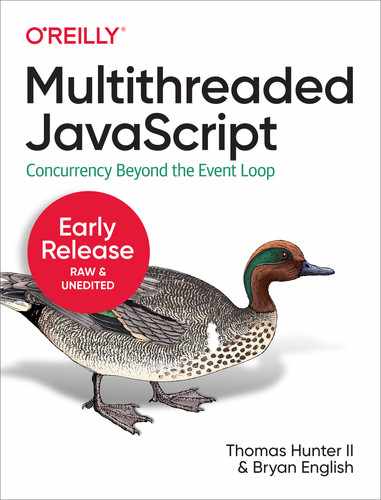Traditionally, JavaScript has been a single-threaded language. Nearly all online forum posts, books, online documentation, and libraries refer to the language as single threaded. Thanks to recent advancements in the language--such as the Atomics and SharedArrayBuffers objects and Web Workers in the browser--JavaScript is now a multi-threaded language. These features will go down as being the biggest paradigm shift for the world's most popular programming language. Multithreaded JavaScript explores the various features that JavaScript runtimes have at their disposal for implementing multithreaded programming, providing both practical real-world examples, as well as reference material.
Table of Contents
- Preface
- 1. Introduction
- 2. Browsers
- Dedicated Workers
- Dedicated Worker Hello World
- Advanced Dedicated Worker Usage
- Shared Workers
- Shared Worker Hello World
- Advanced Shared Worker Usage
- Service Workers
- Service Worker Hello World
- Advanced Service Worker Concepts
- Message Passing Abstractions
- The RPC Pattern
- The Command Dispatcher Pattern
- Putting it All Together
- 3. Node.js
- 4. Shared Memory
- Intro to Shared Memory
- Shared Memory in the Browser
- Shared Memory in Node.js
- SharedArrayBuffer and TypedArrays
- Atomic Methods for Data Manipulation
- Atomics.add()
- Atomics.and()
- Atomics.compareExchange()
- Atomics.exchange()
- Atomics.isLockFree()
- Atomics.load()
- Atomics.or()
- Atomics.store()
- Atomics.sub()
- Atomics.xor()
- Atomicity Concerns
- Return Values Ignore Conversion
- Data Serialization
- Booleans
- Strings
- Objects
- 5. Advanced Shared Memory
- 6. Multithreaded Patterns
- 7. WebAssembly
- 8. Analysis
- A. Structured Clone Algorithm
